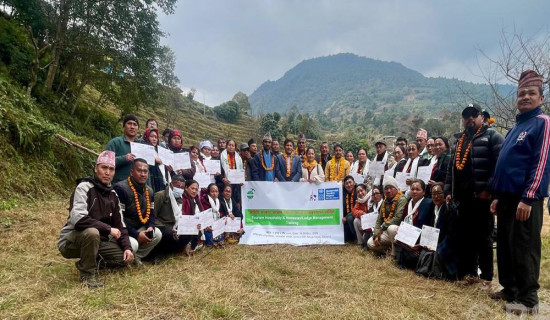- Sunday, 21 December 2025
Mixed Outcomes Of Elections
The second federal and provincial elections held after the promulgation of the present constitution have been completed. Many young leaders have won the elections. However, many of the same repeated and tested faces have a continued presence through the mandate of the sovereign voters. The people are in a dilemma about the future of the newly formed parliament and the fate of democracy. How are these young parliamentarians able to keep the parliament in favour of the general public, national sovereignty and nationality? Is it possible for these young leaders to align the familiar faces towards noble destinations? How honestly will these newly elected members be committed to their manifestoes? This author tries to analyse the post-poll scenario in this write-up.
In the local election conducted in last May, Balendra Shah, Harka Sampang and Gopal Hamal were successful in establishing the legacy of independent energetic candidacy. This clearly created an environment of change and a concrete intention to curb the unethical political behaviours of representatives that are driven entirely for the group, party, and self-interest. Was this an indication of a landslide in public faith and trust regarding political parties? Is it true that collusion and rampant corruption have become intolerable? Such local level election results were unimaginable in past elections. The current situation seems altogether different as independent candidates have won the election alone.
Restless youths
The 'No Not Again' campaign was launched and disseminated widely and urged voters not to support the tested leaders. A new generation of youths who are restless and dissatisfied with the present establishment has emerged. They pose a significant challenge to the political status quo. Youths had aggressive campaigns to cast votes in favour of independent candidates as well as young competitors of independent parties. They discouraged old party candidates who were in competition. Potential voters stood in support of this youth initiative. This is evidenced by the victory of independent candidates and candidates belonging to a newly formed Rastriya Swatantra Party in the federal parliamentary election.
The major political parties had fought polls by forming alliances. The five-party ruling alliance consisted of Nepali Congress, CPN-Maoist Centre, CPN-Unified Socialist, Rastriya Janamorcha, Lokatantrik Samajbadi Party while CPN-UML had forged alliance Rastriya Prajatantra Party (RPP) and Kamal Thapa of RPP-Nepal, Janata Samajbadi Party but the voters and even the workers of those parties were not receptive to such alliances. Questions were frequently raised over the ideology and manifestoes of these political parties. Advocacy in favour and in opposition created by different groups generated a favourable environment for the youths and independents.
Is alliance in politics uncommon and unnatural? To get the appropriate answer to these questions, we have to see and analyse international practices. In politics, it is common to form alliances. For example, in the USA, where two national parties dominate, such cooperation is slight at best. But some countries have many small parties. Such small parties deserve sufficient bargaining power with the government, sometimes ending up becoming kingmakers.
In Israel, 40 political parties contested polls on November 1. The Likud Party, led by Benjamin Netanyahu, secured victory with the help of four other ultranationalist parties. Germany saw 47 parties in competition in the September elections. The Social Democratic Party of Chancellor Olaf Scholz emerged as the largest party with only 25.7 per cent of the total votes. Being the largest party without sufficient seats to form a majority government, a coalition government was formed along with the Free Democratic Party and the Greens. Many examples could be cited to justify alliance practices in global politics, and how such alliances run the government is crucial.
In Nepal, youth representation has been the demand of contemporary politics. Now, the time has come to see the performance of independent youths. Independent candidates lack the resources to face elections, despite deserving networks and organisations across the country. Likewise, youths are getting such opportunities to influence governments. The current parties are criticised for their attempts to act in their own individual or party interest instead of the interest of the nation.
Performance
Now, the future of independent youths depends on their performance. They have to check the government's performance with a unified voice in the parliament as well as with the people. Rampant corruption, the politicisation of all government organisations, daily practices to mitigate conflicts of interest, budget allocation to eliminate inter-regional disparity needs to be checked. It is high time for independents to remain in the opposition to pressure and correct the incumbent government.
Improvements on candidate nomination towards proportional representation have been highly discussed. Originally, the idea was to use these seats to uplift the marginalised— to guarantee inclusive representation in the legislature. It has instead become a tool for top party leaders to reward loyalists. These malpractices help grow the average voters’ frustration, leading to a rise in the number of independent candidates. Cleansing the system takes time. We are talking about changing the culture, attitude and wheeling and dealing.
(Mainali is a former secretary in the government.)











-(1)-original-thumb.jpg)




